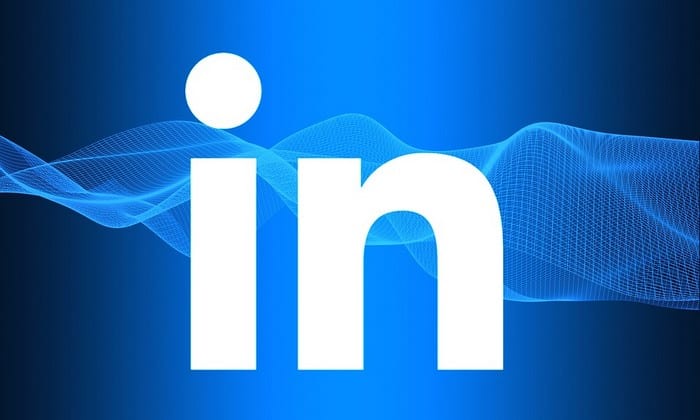Are you tired of hitting the LinkedIn connection limit and being restricted from growing your network? If so, you're not alone. Many professionals face this frustrating challenge when trying to expand their reach on the popular business networking platform. But fear not – in this blog post, we'll share some tips and strategies for avoiding those pesky connection restrictions and maximizing your LinkedIn presence. So buckle up, connect your seat belts (pun intended), and let's get started!
What are LinkedIn's connection limit rules?
When it comes to LinkedIn connection limit rules, there are a few things you should know. First and foremost, LinkedIn connections are limited to 3,000. That being said, if you're trying to connect with someone who you don't know well, or who isn't in your immediate network, it's best to request an introduction from a mutual connection. This will not only increase the chances of your request being accepted, but it will also help you avoid any potential LinkedIn connection limit issues.
In addition, LinkedIn also has strict limits on how many direct messages you can send per day. These limits vary depending on your membership level (Premium or Free), but they range from 10-50 messages per day. So if you're planning on using LinkedIn to reach out to a large number of people, it's important to keep this limit in mind. Know here the Linkedin connection limit per day!
Finally, it's worth noting that LinkedIn imposes these connection and message limits in order to prevent spamming and ensure that users are interacting with each other in a meaningful way. So if you're just looking to add as many connections as possible without actually engaging with them, you'll likely run into some problems down the line.
How to avoid getting restricted by LinkedIn
If you're like most LinkedIn users, you've probably had your fair share of connection requests rejected. While it's frustrating to have your request denied, there are a few things you can do to avoid getting restricted by LinkedIn.
Here are a few tips:
1. Don't add too many people at once - If you're looking to add a bunch of new connections, try doing it gradually instead of all at once. Adding too many people at once is a surefire way to get yourself restricted.
2. Don't send generic connection requests - Take the time to personalize each connection request you send. Sending generic or massConnection requests is another quick way to get yourself restricted.
3. Connect with people you know - This one seems obvious, but it's worth mentioning. LinkedIn is more likely to approve connection requests if you're connecting with people you already know in real life.
4. Use keywords in your profile - Be sure to include relevant keywords in your profile so that LinkedIn knows who you are and what you do. This will help increase the chances that your connection request will be approved.
5. Get verified - If you have a verified account on LinkedIn (i.e., your identity has been confirmed by LinkedIn), you're more likely to have your connection requests approved automatically.
How to build quality connections on LinkedIn
When it comes to LinkedIn, quality connections are key. With a few simple tips, you can avoid any connection restrictions and build the relationships you need to succeed.
Here's how to build quality connections on LinkedIn:
1. Seek out mutual connections. When you're looking to connect with someone on LinkedIn, check to see if you have any mutual connections. These are people who can vouch for you and help introduce you to your potential new connection.
2. Connect with people in your industry. LinkedIn is a great way to network with other professionals in your industry. By connecting with them, you can stay up-to-date on industry news, trends, and job opportunities.
3. Join relevant groups. Groups are a great way to connect with like-minded people on LinkedIn. There are groups for just about every topic imaginable, so find ones that fit your interests and get involved in the discussions.
4. Endorse others' skills. When you endorse someone's skills on LinkedIn, they're more likely to return the favor. This is a great way to build up your own skill set and make yourself more visible to potential employers or clients
The benefits of having a large LinkedIn network
If you're like most people, you probably have a LinkedIn profile but don't use it very often. You might add the occasional update about a new job or project, but for the most part, it sits idle. And that's perfectly fine – after all, LinkedIn is a professional networking site, not a social media platform like Facebook or Twitter.
But what you may not realize is that having a large LinkedIn network can actually be quite beneficial, even if you don't use the site regularly. Here are just a few of the benefits:
1. Increased visibility for your profile.
If you have a large network on LinkedIn, your profile is more likely to show up in search results – both when other users are searching for you specifically, and when they're doing general searches related to your industry or keywords associated with your profile. This increased visibility can lead to more opportunities, whether in the form of business deals, job offers, or simply making valuable connections.
2. Greater chances of being found by recruiters.
Recruiters are increasingly using LinkedIn as a tool to find candidates for open positions. If you have a large and active network on the site, you're more likely to be found by recruiters who are searching for someone with your skills and experience. Even if you're not actively looking for a new job, it's always good to keep your options open – and LinkedIn can help you do just that.
3. Access to
LinkedIn Connection Limits
LinkedIn connection limits can be a frustrating restriction for users who are trying to build their professional network. The good news is that there are ways to avoid these restrictions, and LinkedIn provides some helpful tips on how to do so.
One way to avoid LinkedIn connection limits is to focus on quality over quantity. This means that you should connect with people who you know and trust, and who are likely to be interested in the same things as you. LinkedIn also advises users to add a personal note when they request a connection, as this makes it more likely that the other person will accept.
Another way to avoid restrictions is to use LinkedIn Groups. Groups provide a great way to connect with like-minded professionals and build relationships. You can also participate in discussions and offer valuable insights that can help grow your professional network.
Finally, LinkedIn recommends that users take advantage of their "Who's Viewed Your Profile" feature. This feature allows you to see the profiles of people who have recently viewed your profile. If you see someone who looks like a good connection, don't be afraid to reach out and send them a request.
By following these tips, you can make sure that you're making the most of your LinkedIn connections and avoiding any restrictions.
How to Avoid Restrictions
If you want to avoid restrictions on LinkedIn, there are a few things you can do. First, make sure that you're not sending too many invitations to people who aren't in your network. LinkedIn restricts users who send a lot of invitations to people who aren't in their network. Second, don't add too many people to your network at once. LinkedIn imposes limits on how many people you can add to your network per day, and adding too many people at once can trigger those limits. Finally, don't try to connect with too many people who have no connection to you. LinkedIn's algorithm looks for patterns of behavior that suggest spamming, and connecting with too many random people can raise red flags. If you follow these guidelines, you should be able to avoid most restrictions on LinkedIn.
What to Do If You're Restricted
If you're currently restricted from connecting with new people on LinkedIn, there are a few things you can do to try and avoid future restrictions:
-First, check to see if you're adhering to LinkedIn's Connection Policy. If you're not sure what the policy is, you can find it here: https://www.linkedin.com/help/linkedin/answer/56160. Basically, don't add anyone to your connections list who you don't know and haven't had a real-life interaction with.
-Second, take a look at the content you've been sharing on LinkedIn. If you've been sharing too much self-promotional content or spammy links, that could be part of the reason you're being restricted. Try toning down the amount of promotional content you share, and focus on providing value to your connections instead.
-Finally, reach out to LinkedIn customer service if you think there's been a mistake. They may be able to lift your restrictions if they see that you're following the rules and trying to improve your account.
LinkedIn Alternatives
There are a few LinkedIn alternatives that can help you avoid restrictions. One is to use a different platform altogether, such as Facebook, Twitter, or Google+. Another is to create a new LinkedIn account with a different email address. Finally, you can use a tool like Hootsuite to help you manage your social media accounts and avoid restrictions.
Conclusion
LinkedIn connection limits can be a source of frustration for many users. However, with the right approach and understanding of the rules, it is possible to increase your network size without facing any restrictions. By leveraging referrals from existing connections, focusing on quality rather than quantity, keeping track of how you connect with people and engaging in conversations, you'll be able to extend your reach beyond the imposed connection limits - ultimately helping you to build new relationships and find professional opportunities on LinkedIn!


No comments yet